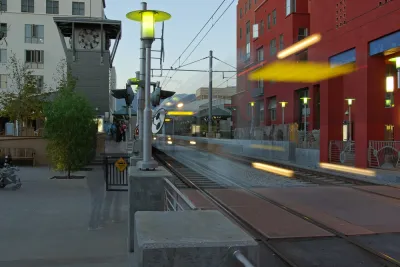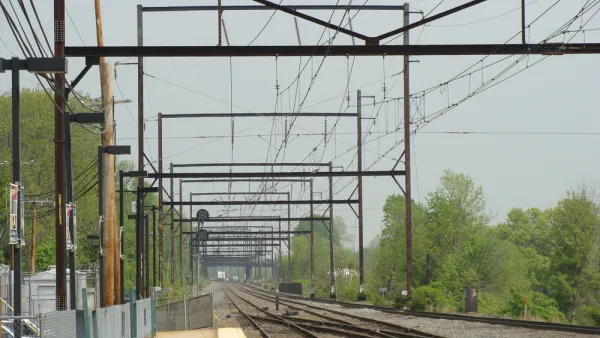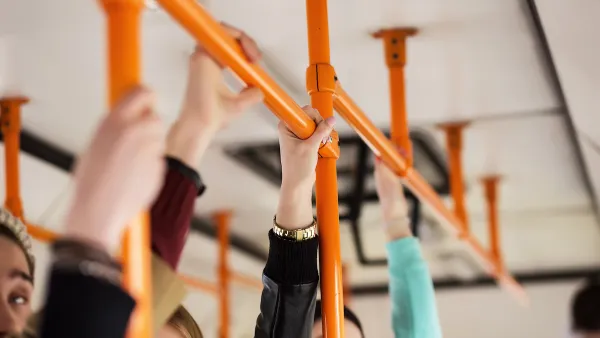As ridership revenues drop, more agencies are looking to diversify their income sources by leasing agency-owned land to developers.

With ridership "plummeting" during the pandemic, cash-strapped transit agencies are turning to leasing real estate to recover lost revenue, reports Jenni Bergal. "Many large transit agencies already have their own real estate departments and for years have been leasing property—often parking lots near rail stations—to development companies," with rent subsidizing operations and maintenance. Encouraging transit-oriented development near stations is "seen as a way not only to create a long-term revenue stream, but also to increase ridership, minimize traffic congestion and help communities by providing jobs and housing, some of it affordable, near transit."
"Agencies have been experimenting with scrapping or reducing fares or adding service to bring back riders and ensure access for disadvantaged communities. During the pandemic, the majority of people who continued to ride buses and trains were essential workers with low incomes, often people of color." The shift toward cheaper or free fares, along with the precipitous fall in ridership caused by the pandemic, has "prompted many transit agencies to look at various ways to diversify their funding beyond relying on fareboxes and federal, state and local dollars."
"[S]ome transit agencies that have gotten into the real estate business are trying to develop affordable housing projects. They often lease to private developers, but sometimes they work with nonprofits, community groups or local governments." Jessie O'Malley Solis, an agency program manager for the Santa Clara Valley Transportation Authority, says "transit-oriented development offers the agency the opportunity to fund normal operations as well as service improvements and enhancements" that will prove solid investments in the system's future.
FULL STORY: Transit Agencies Lease Real Estate to Generate Much-Needed Cash

Analysis: Cybertruck Fatality Rate Far Exceeds That of Ford Pinto
The Tesla Cybertruck was recalled seven times last year.

National Parks Layoffs Will Cause Communities to Lose Billions
Thousands of essential park workers were laid off this week, just before the busy spring break season.

Retro-silient?: America’s First “Eco-burb,” The Woodlands Turns 50
A master-planned community north of Houston offers lessons on green infrastructure and resilient design, but falls short of its founder’s lofty affordability and walkability goals.

Test News Post 1
This is a summary

Analysis: Cybertruck Fatality Rate Far Exceeds That of Ford Pinto
The Tesla Cybertruck was recalled seven times last year.

Test News Headline 46
Test for the image on the front page.
Urban Design for Planners 1: Software Tools
This six-course series explores essential urban design concepts using open source software and equips planners with the tools they need to participate fully in the urban design process.
Planning for Universal Design
Learn the tools for implementing Universal Design in planning regulations.
EMC Planning Group, Inc.
Planetizen
Planetizen
Mpact (formerly Rail~Volution)
Great Falls Development Authority, Inc.
HUDs Office of Policy Development and Research
NYU Wagner Graduate School of Public Service




























